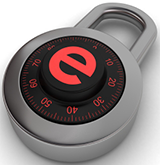In the wake of increasing cyber crimes, e-commerce security is of prime importance for both the site owner as well as the clients. E-commerce entrepreneurs must be fully aware of all the potential threats that their site can be prone to, and equip themselves with the most stringent security measures to effectively combat these security threats. If your site does not look trustworthy or does not have the necessary security certifications in place, most clients will hesitate to go ahead with an online payment on your site. But of course, there is much more to e-commerce security than just appearing trustworthy to customers. It involves a series of security measures such as prevention of unauthorized access to systems, authenticating data, maintaining confidentiality of private information and fraud prevention.
Potential Threats to your E-Commerce Site
Although there is no limit to security threats and fraudulent activities online, the following are some common security issues faced by e-commerce sites:
1. DOS or DDOS attacks: DOS stands for “Denial of Service” and DDOS stands for “Distributed Denial of Service”. In simple terms, a DOS or DDOS attack is an attempt by hackers to make a machine or network resource unavailable to its intended users. In case of e-commerce, a DDOS attack implies that a large number of automated requests would be sent to your e-commerce site at a time, eventually leading to slowing down of your server, and your site becoming inaccessible to actual visitors. This downtime can result in great losses.
2. Unauthorized access to confidential data: If you don’t have the right encryption mechanisms in place, there can be malicious attempts to gain unauthorized access to the database of your site, resulting in misuse of confidential customer details such as credit card number, personal identification number etc, as well as possible tampering with the admin panel of your site. Theft of financial data is done by cyber-criminals using SQL Injection, Session Hijacking, Path Traversal and Malware.
3. Malware Attack: Apart from theft of data, a Malware attack could usurp you from search engine results, open pop-up ads to drive away visitors, redirect visitors to pages with viruses or send spam mails to your clients.
4. Masquerading: This basically means that somebody impersonates you to convince people to reveal their financial data. Also known as phishing, in case of e-commerce, it could vary from the degree of email spoofing to creating a duplicate site that looks exactly similar to your site, and redirecting your visitors to the fake site.
Basic Security Measures
By complying with the following requirements, you can combat (although not completely eliminate) the aforementioned security threats to a large extent:
1. SSL and TLS Certification: Technically speaking, an SSL Certificate is basically a small data file responsible for binding a cryptographic key to an organisation’s details. It basically uses a program layer between the Hypertext Transfer Protocol and Transport Control Protocol layers, for the purpose of securing credit card transactions, data transfer and logins. Having an SSL on your website allows sensitive information such as credit card details to be transmitted securely. An SSL Certificate contains your domain name, company name and postal address. Every SSL Certificate is created for a particular server in a particular domain for a verified business entity. TLS or Transport Layer Security is an advanced version of SSL, and is commonly used today. The degree of encryption carried out by the SSL or TLS certificate can vary from 40 to 256-bit, based on the requirement. A number of certified companies like Verisign, RapidSSL and GeoTrust provide SSL certificates. It is recommended that you opt only for a reliable SSL certificate provider to ensure maximum security.
2. Two Factor Authorization: Using a two-factor authorization means providing an added layer of security to your site, by asking the user to provide a one-time password or pin automatically sent to the user’s registered cell phone number, in addition to the regular password. In terms of liability also, a site owner is far less accountable for a security mishap if there is a two-layered or even three-layered authorization process in place.
3. Digital Signature: A Digital Signature is an electronically transmitted message that establishes the identity of the sender. In e-commerce, digital signatures can be used for preventing fraud and phishing, and eliminates the need for a lot of paperwork as well.
4. Firewall: A Firewall is a security software aimed at inspecting the access of a given computer or network. Installing a Firewall for your e-commerce site will go a long way in defending your e-commerce site against external threats.
Better safe than sorry
Security is one aspect of e-commerce that you definitely cannot compromise upon. Even though online shopping is getting increasingly popular with every passing day, an average consumer still thinks twice before trusting a site. So arm your e-commerce site as best as possible before taking a plunge into the e-commerce business.



Add Comment